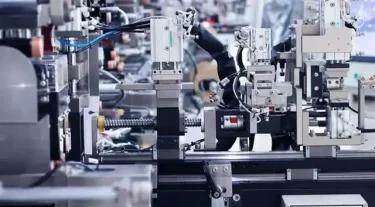Tape Manufacturing Process and Techniques

# Tape Manufacturing Process and Techniques
## Introduction to Tape Manufacturing
Tape manufacturing is a complex process that involves multiple stages to produce high-quality adhesive products for various applications. From everyday household uses to industrial applications, tapes play a crucial role in modern life. The manufacturing process combines material science, engineering, and precision techniques to create reliable adhesive solutions.
## Raw Materials in Tape Production
The foundation of tape manufacturing begins with selecting appropriate raw materials:
– Backing materials (paper, plastic films, cloth, or foil)
– Adhesive compounds (rubber-based, acrylic, or silicone)
– Release liners (for pressure-sensitive tapes)
– Additives (tackifiers, stabilizers, and fillers)
## The Tape Manufacturing Process
### 1. Backing Material Preparation
The first step involves preparing the backing material. This may include:
– Extruding plastic films
– Weaving or knitting fabric backings
– Treating paper backings for strength and durability
### 2. Adhesive Application
There are several methods for applying adhesive to the backing material:
– Solution coating: Dissolving adhesive in solvent and applying it to the backing
– Hot melt coating: Applying molten adhesive directly
– Water-based coating: Using water as the carrier for adhesive application
### 3. Drying and Curing
After adhesive application, the tape goes through drying or curing processes:
– Solvent evaporation for solution-coated adhesives
– Water evaporation for water-based adhesives
– UV or thermal curing for certain adhesive types
### 4. Slitting and Rewinding
The large rolls of coated material are then slit into narrower widths:
– Precision slitting machines cut the material to desired widths
– Automated systems rewind the slit tape onto cores
– Quality control checks ensure consistent width and edge quality
## Advanced Manufacturing Techniques
Modern tape manufacturing incorporates several advanced techniques:
### Multi-layer Coating
Some tapes require multiple adhesive layers or special coatings:
– Primer layers for better adhesion
– Top coatings for surface protection
– Multiple adhesive layers for specific performance characteristics
### Pattern Coating
Specialized applications may use patterned adhesive application:
– Dot matrix patterns
– Striped adhesive application
– Custom patterns for specific bonding requirements
### Specialty Tape Production
Manufacturing techniques vary for specialty tapes:
– Double-sided tapes with different adhesives on each side
– Foam tapes with additional cushioning layers
– Electrically conductive tapes with special formulations
## Quality Control in Tape Manufacturing
Ensuring consistent quality involves multiple checks:
– Adhesive strength testing
– Thickness measurements
– Visual inspection for defects
– Performance testing under various conditions
## Environmental Considerations
Modern tape manufacturing focuses on sustainability:
– Reducing solvent use
– Implementing water-based adhesive systems
– Recycling production waste
– Developing biodegradable tape options
## Future Trends in Tape Manufacturing
The industry continues to evolve with:
– Nanotechnology applications in adhesives
– Smart tapes with embedded sensors
– Improved recyclability and sustainability
– Advanced automation in production processes
The tape manufacturing process combines traditional techniques with modern innovations to create products that meet diverse needs across industries. As technology advances, we can expect even more sophisticated tape solutions with enhanced performance characteristics.
Keyword: tape manufacturing